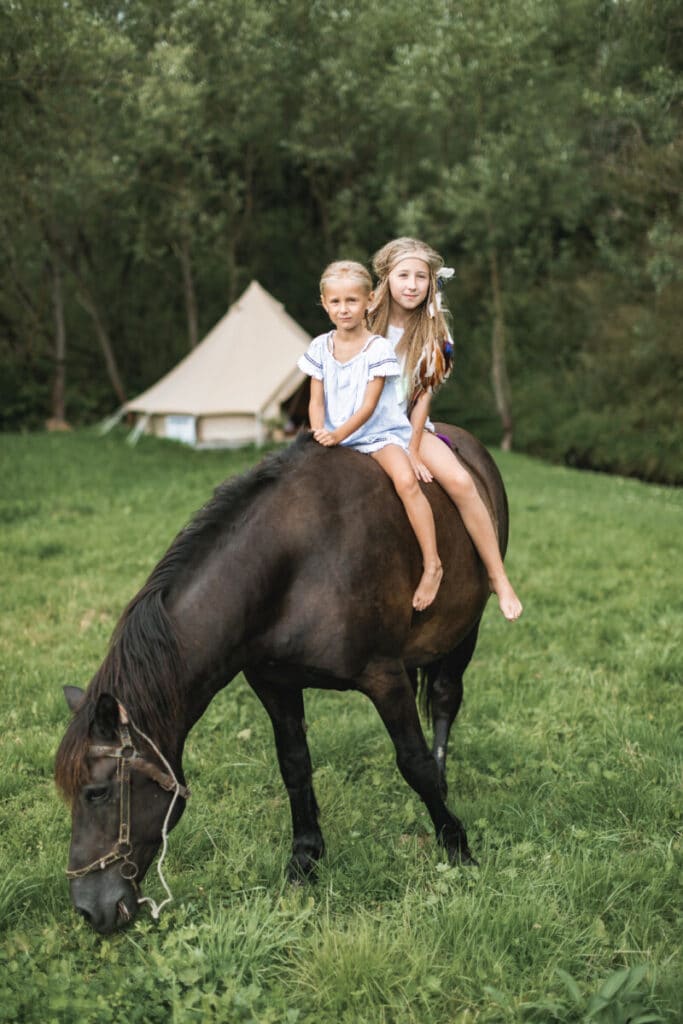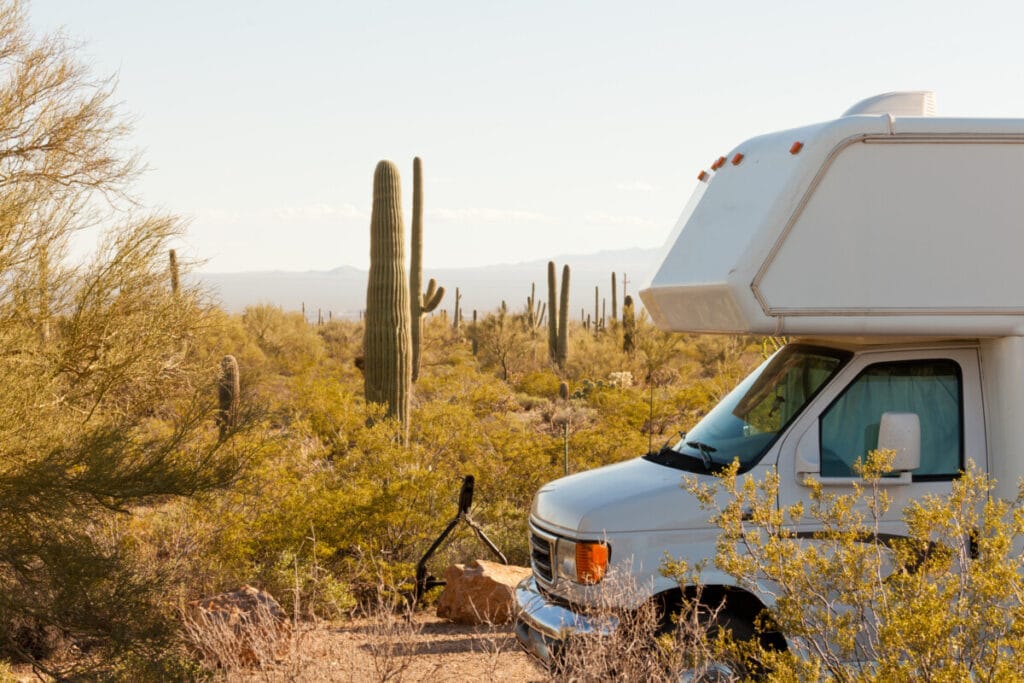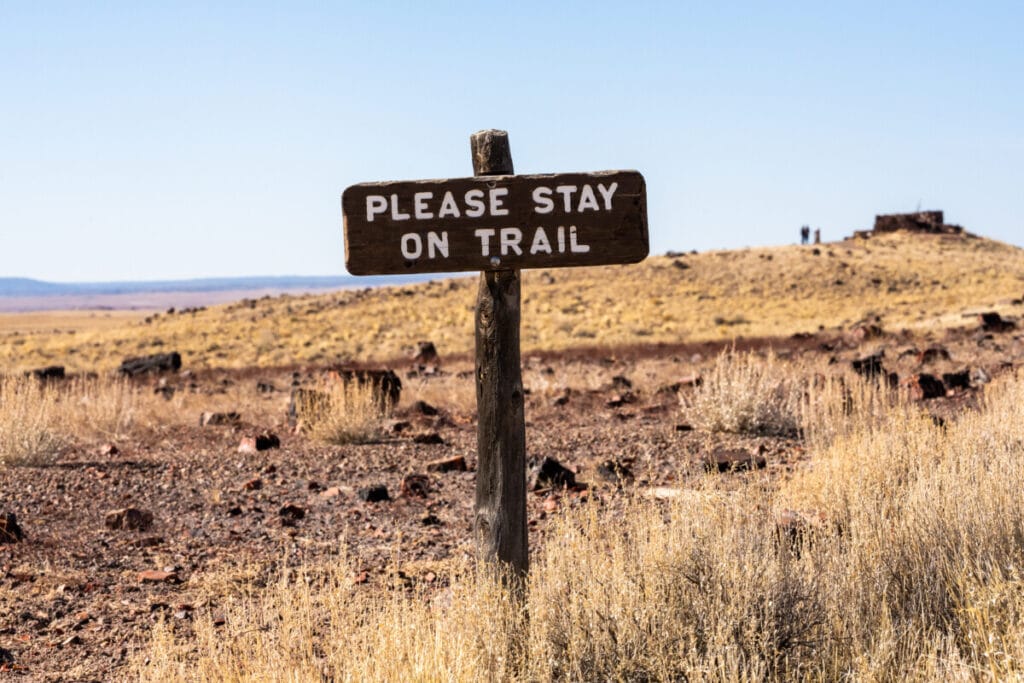Where You Can and Can’t Camp on BLM Land

The Bureau of Land Management owns millions of acres of property throughout the United States. With so much land available, this might sound like a camper’s paradise. However, only some of it permits camping.
Most BLM land is available for camping, as long as it doesn’t interfere with other land designations and wildlife. The Bureau of Land Management runs developed campsites throughout the United States. Those interested in primitive camping must follow the Tread Lightly and Leave No Trace principles.
Before you head out on your next BLM camping trip, you should know about some of the rules and regulations governing land in your area. Camping restrictions vary depending on the state you are in. Keep reading to learn more about some of the differences in each state.
BLM Campgrounds
The Bureau of Land Management has developed and maintains hundreds of campsites throughout the United States. All 1,176 BLM campgrounds can be found on the Bureau of Land Management website. These campsites often offer a level spot to pitch a tent or park a small camper. Visitors of BLM campgrounds will often have access to picnic tables and metal fire rings.
While these campsites offer a less primitive camping experience, they are not like commercial campgrounds that provide water and electrical hook-ups. When planning to visit a BLM campground, assume that there will be little to no amenities.
Most Bureau of Land Management campgrounds charge visitors a fee for overnight stays. This fee ranges between $4 and $10. This money is then used to help maintain the property for future visitors.
Some BLM campgrounds may have an attendant supervising the site; however, many will just have a dropbox where campers should leave their payment.
Because BLM campsites are tucked deep into the woods, sometimes the bureau must close them due to nearby fires, flooding, or snowfall. Don’t be surprised when you come across a BLM campground only open for certain seasons.
In most cases, Bureau of Land Management campgrounds are first-come, first-served. However, popular camping sites allow you to make a reservation on Recreation.gov. If you’re looking to camp in Alaska, know that all BLM campsites are first-come, first-served.
Always look up the regulations for the specific BLM campground you plan on visiting, as rules and amenities may vary from site to site.
If you want to take your horses camping, there are 18 Bureau of Land Management campsites that permit it. These campgrounds are located in the following areas:
California

- The Big Maria Mountain Wilderness
- Whipple Mountains Wilderness
- Santa Rosa and San Jacinto Mountains National Monument (Ribbonwood Equestrian Campground)
- Equestrian Campground
Nevada
- Steven’s Camp Recreation Area
- Black Rock Desert-High Rock Canyon Emigrant Trails National Conservation Area
- Sacramento Pass Rec. Area
- Steven’s Camp Recreation Area
- Black Rock Desert-High Rock Canyon Emigrant Trails National Conservation Area
- Sacramento Pass Rec. Area
Oregon
- Donner ьnd Blitzen Wild and Scenic River
- Gerber Recreation Area
- South Steens Campground
- Riddle Brothers Ranch National Historic District
- Reservoir Road Off Highway Vehicle Play Area
Utah
- Moab Field Office (BLM)
- Kens Lake Group Sites
- Ken’s Lake Campground
- Upper Onion Creek Group Site
- Lone Mesa Group Sites
Washington
At any of these sites, you may need to bring your own feed and method of containing the horses at night. Except the Ribbonwood Equestrian Campground in California, as this offers 2 horse corrals with your reservation.
Each BLM campground will vary on how long you are allowed to stay. Most permit up to 14 days; however, New Mexico’s Rio Puerto and Taos Field Offices BLM campgrounds have a 7-day camping limit.
Dispersed Camping
While camping at a developed site is most convenient, many enjoy going where few others have yet to explore. Dispersed camping (also known as primitive camping, undeveloped camping, or boondocking) refers to camping outside of a developed campsite. You can go dispersed camping on most BLM land.
The Bureau of Land Management allows dispersed camping on most public lands as long as it doesn’t impact wildlife and natural resources. Additionally, primitive camping cannot interfere with any previously authorized uses for the land. For example, if the BLM has permitted a company to mine on a section of land, camping could pose a danger and is therefore not allowed.
In most cases, the land will have a sign that states “no camping”; however, you should always verify before planning your camping trip. For example, in a variety of areas in Utah, BLM land doesn’t allow dispersed camping except for at designated sites (marked with a brown sign and a picture of a tent). These include the following areas:
- Dubinky Well Road
- Gemini Bridges Road
- the Black Ridge Road
- Pack Creek Roads
- Mill Canyon Road
- Blue Hills Road
- South of Moab in the Blue Hill/Picture Frame Arch area
Other areas in Utah don’t allow any dispersed camping at all. These include the following areas:
- Cedar Mesa area
- San Juan River (except for permitted river trips)
- Red Cliffs NCA
- Smithsonian Butte Backcountry Byway
- Baker Dam Recreation Area
- Red Cliffs Recreation Area
- Santa Clara River Reserve
Utah also restricts primitive campers from setting up in water source and riparian areas. Those interested in camping in the Monument area must have an overnight permit. These permits are free at any Monument visitor center.
New Mexico also has some restrictions of its own. Primitive campers cannot set up sites within 900 feet of any developed watering source, such as a watering trough for livestock.
Regardless of the state you boondock in, there is a limit on how long you can remain in one area. Most states limit you to 14 days for a 28-day period. These 14 days do not have to be consecutive. After the 28-day period, you must move at least 25 miles in any direction from your current campsite. The 28-day period then restarts for this new campground. The 28-day time starts on the first day you occupy the site.

While this is the standard for most states, Montana, North Dakota, and South Dakota allow up to 16 days. This timeframe applies to both developed and undeveloped campgrounds managed by the BLM.
If you want to stay longer than the 14 or 16-day limit, locate a long-term visitor area, also known as an LTVA. Both Arizona and California have LTVAs. These allow campers to exceed the 14-day maximum between September and April. The Bureau of Land Management created LTVAs due to the increased amount of people seeking warmer areas during the winter months.
To stay at an LTVA, you must have a seasonal special recreation permit. You can stay at the following LTVAs:
- La Posa
- Midland
- Mule Mountain
- Imperial Dam
- Pilot Knob
- Tamarisk
- Hot Spring
Most LTVAs require campers to have a “self-contained camping unit.” In other words, you must stay in a camper or other mechanism with a wastewater holding tank of at least 10 gallons. However, the Mule Mountain, Imperial, and La Posa LTVAs allow non-self-contained camping units.
Other dispersed camping areas that require a permit are the Clear Creek Recreational Area and the King Range Wilderness sites in California. Arizona also requires commercial recreation leases for some camping sites along Lake Havasu and the Colorado River.
While most of California BLM land doesn’t require a permit for undeveloped camping, anyone planning on using a gas cook stove or having a campfire must have a permit. These permits are free and can be found at Prevent Wildfires California.
While primitive camping in the lower 48 states, you can’t leave your property unattended for more than 10 days. However, if you’re boondocking in Alaska, you can leave your property unattended for up to 12 months. Waiting this long to collect your property is not recommended, as it could get destroyed by wildlife or taken by other campers in the meantime.
When selecting a site to set up your primitive campsite, the Bureau of Land Management requests that you find an area that other campers have clearly used. Look for signs such as bare land or tire tracks to identify these areas. Reusing other’s campsites prevents the unnecessary destruction of natural resources. The BLM also asks that you don’t drive off the roads for this same reason.

If you are using a camper with a bathroom, or some other sewage collection system, you cannot dump the tank on BLM land. This pollutes the ground and surrounding water supplies. Instead, dump your tank at an authorized facility. The same goes for garbage—anything you take with you must be removed when you leave.
Tread Lightly and Leave No Trace Principles
Whether you camp on developed or undeveloped portions of BLM land, you are asked to adhere to the Tread Lightly and Leave No Trace principles. These principles are often adopted by backpackers and help keep the wilderness wild for others to enjoy.
To ensure you get the most out of your BLM experience, let’s discuss the specifics of both the Leave No Trace and Tread Lightly principle below.
Leave No Trace
The first rule of Leave No Trace is to plan ahead and prepare. The purpose of planning and preparing is to minimize safety risks without harming the natural environment. In order to plan and prepare properly to leave no trace, you’ll need to carefully study the other leave no trace principles.
Planning and preparing includes knowing the camping or hiking abilities of all group members and bringing all the equipment you need to have a successful trip. To choose the best gear, you may consider listing your trip goals and expectations before packing.
When planning for a camping trip, make sure you’ve checked the weather and know the route you’ll be taking.
The second rule, travel and camp on durable surfaces. This especially applies to dispersed camping. This rule suggests camping far enough from the trail that you aren’t visible to passersby. Additionally, you shouldn’t set up camp within 200 feet of a water source. If you camp too close to water, you put yourself at risk of having some close encounters with wildlife. You may also deter other animals from accessing the water source they need.
Don’t place your campsite onto fragile plant life, as even temporary constriction could kill it.
Both garbage and human waste have the potential to damage the environment and pollute water supplies. For this reason, the third rule of the leave no trace principle is to dispose of waste properly. In some areas, be prepared to pack out both human waste and garbage.
The fourth rule of the leave no trace is essentially to leave nature as you found it. The principle refers to this as leave what you find. While you might find some cool deer sheds or rare rocks, you should leave those items for others to enjoy for years to come.
The fifth rule is one of the most important rules, especially when camping during the summer: minimize campfire impacts. If you’re camping during a red flag notice, it is extremely dangerous to have a campfire. Whenever you do choose to have a campfire, ensure that the coals are completely cool before leaving them. Even slightly warm coals could relight with a gust of wind.
During your many primitive camping experiences, you’re guaranteed to come across wildlife at least a few times. While this is can be exciting, remember that you should always keep your distance from wild animals. Leave no trace refers to this as respecting wildlife. Not only does it prevent them from feeling scared or threatened, but it protects you from being injured.
The final part of the leave no trace principle is to be considerate of others. If someone already has a campsite set-up, don’t set yours up right next to them. Additionally, don’t touch other people’s things if you come across them.
Tread Lightly
The concept “tread lightly” is fairly simple and uses many of the same ideologies as the Leave No Trace principle.
To properly exercise the tread lightly principle, you should pick up all litter and try to travel only on established trails. If you see a sign saying no entrance or giving you some other direction, listen to it.
If you come across a closed gate, make sure you close it behind you. However, if the gate was open when you got there, leave it that way. If you are about to enter private property, get permission from the landowner first.
And that’s it! If you adhere to these principles, you can make the most out of your BLM camping experience.
